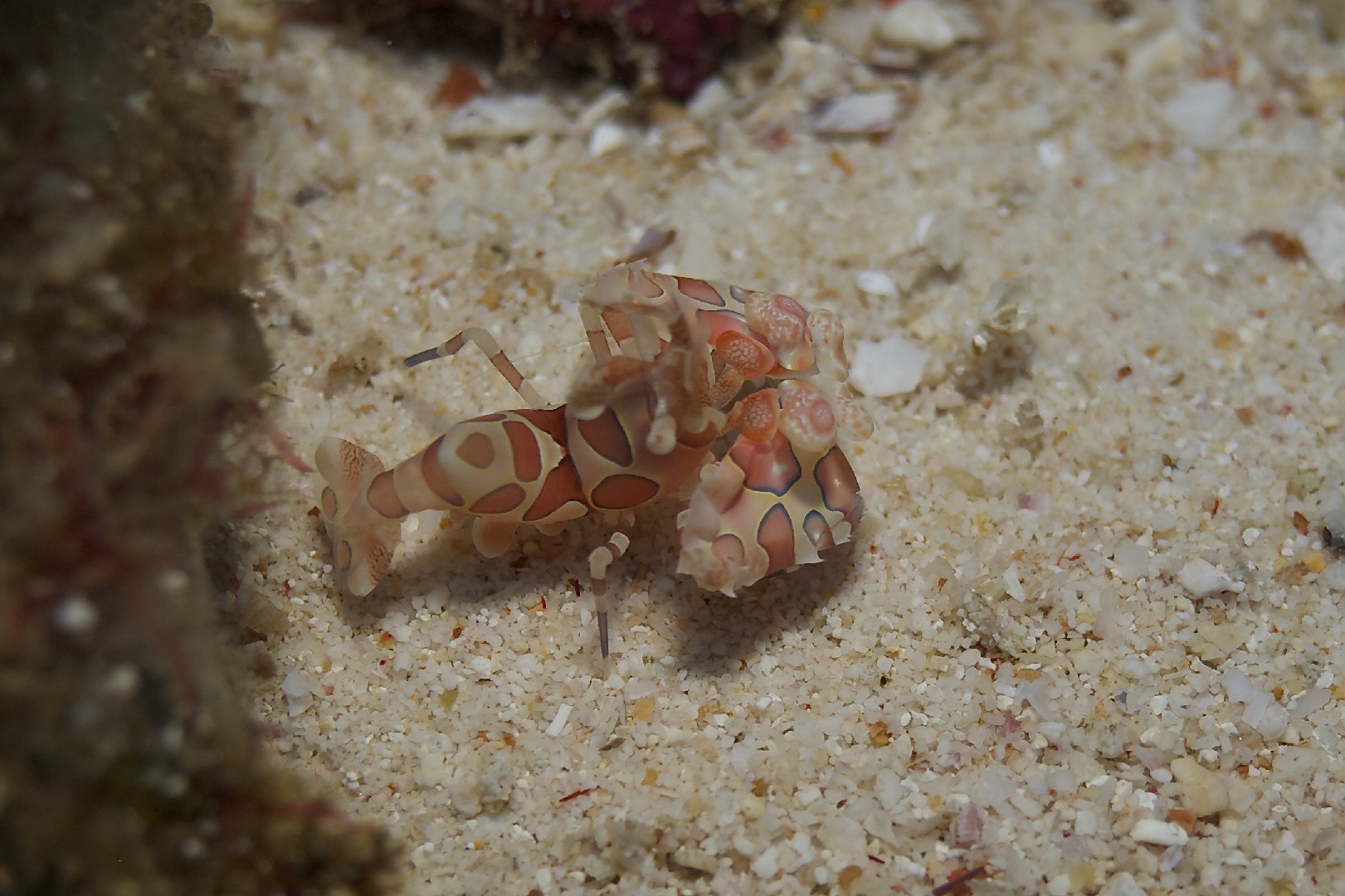Harlequin shrimp
A species of Hymenocera Scientific name : Hymenocera picta Genus : Hymenocera
Harlequin shrimp, A species of Hymenocera
Botanical name: Hymenocera picta
Genus: Hymenocera
Content
Description
 Photo By Elias Levy , used under CC-BY-2.0 /Cropped and compressed from original
Photo By Elias Levy , used under CC-BY-2.0 /Cropped and compressed from original Description
The Hymenocera, or Harlequin shrimp, is usually cream colored or white with occasional spots. Around the Pacific Ocean, many of these shrimp will have red spots while the Indian Ocean shrimp typically have purple spots while its close cousin, the Hawaiian H. picta, has purple and red spots on their body, the shrimp have two walking legs on each side and large claws, or cheliped. The claws and eyes appear to look flattened and thin. On its head the shrimp have "petal-like sensory antennules" to smell out their prey. Their body usually reaches up to 5 cm or 2 inches, and the male is just a little bit smaller than the female.
* Disclaimer: The judgment on toxicity and danger is for reference only. We DO NOT GUARANTEE any accuracy of such judgment. Therefore, you SHALL NOT rely on such judgment. It is IMPORTANT TO SEEK PROFESSIONAL ADVICE in advance when necessary.
Scientific Classification
Phylum
Arthropods Class
Malacostracans Order
Crabs Family
Hymenoceridae Genus
Hymenocera Species
Harlequin shrimp